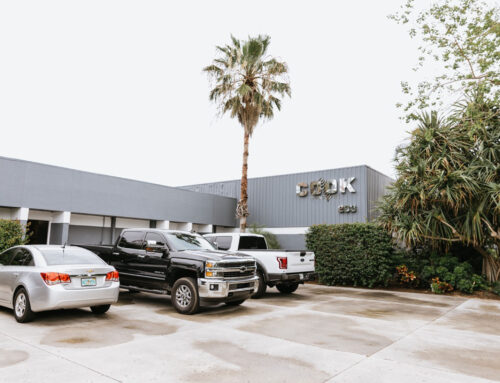A flawless paint job can transform a space, but preparation is key to achieving that seamless finish. Before a brush touches the wall, several critical steps must be taken to ensure the paint adheres properly and looks pristine. Whether you’re planning a simple refresh or a complete overhaul, understanding these preparation steps can save both time and frustration. From the importance of selecting the right materials to the often-overlooked task of surface cleaning, each step serves a crucial role in the overall success of your painting project. So, what exactly does it take to prepare your home for that perfect coat of paint? Let’s delve into the essential steps that ensure your walls will not only look great but stand the test of time.
Importance of Proper Surface Preparation
Preparing surfaces before painting is a crucial step that many overlook. Yet, it significantly impacts the final result. Whether you’re working on residential or commercial properties in Sarasota and Manatee Counties, understanding the preparation process can lead to longer-lasting and more beautiful results.
Proper surface preparation involves more than just cleaning. First, assess the condition of surfaces, as different materials—be it wood, drywall, or concrete—require unique approaches. For example, wooden surfaces may need to be sanded to remove old paint or varnish, ensuring a smooth area for new paint to adhere. On the other hand, concrete surfaces often require pressure washing to remove dust and grime.
Addressing imperfections is another key component. Small cracks and holes are common in walls and ceilings. Using a filler or putty can make these repairs straightforward. Once filled, sand the area to ensure a flat surface. This step is vital as it prevents imperfections from showing through the paint.
Moisture is a common issue, particularly in humid places like Florida. It’s crucial to ensure surfaces are dry before painting. Damp surfaces not only cause paint to bubble and peel but can also lead to mold and mildew. Dehumidifiers and fans may speed up the drying process in enclosed spaces.
Primer application is often debated but plays an important role in surface preparation. Primers are designed to bond to surfaces and create a gripping layer for paint. They’re essential when painting over existing dark or bright colors with lighter shades. Plus, specialized primers address specific issues, such as stain blocking or adhesion on glossy surfaces.
Selecting the right tools also matters. Quality brushes and rollers make a significant difference in application ease and outcome. Remember, investing time in preparing surfaces not only enhances the longevity of the paint job but also improves the aesthetic appeal. This preparatory phase isn’t just about following steps—it’s laying a foundation for excellence in painting.
Tools & Materials You Need
In the painting industry, having the right tools and materials is as important as the skill itself. Your choice of supplies can significantly impact both the efficiency of your work and the quality of the results. Here, we break down the essentials you need for a successful painting project.
Start with high-quality brushes and rollers. These are the backbone of any painting task. For brushes, choose various sizes to accommodate different surfaces—from small bristles for detail work and trims to larger brushes for broad strokes. Synthetic bristles work well with water-based paints, while natural bristles are better for oil-based paints. Rollers, on the other hand, come in different nap lengths. Use short naps for smooth surfaces, like walls and ceilings, and long naps for textured surfaces, such as rough plaster or outdoor brick.
Drop cloths are a must-have. Choose those made from the canvas instead of plastic for better durability and absorption. They also reduce the risk of slipping if you need to walk on them while working. Painter’s tape is another essential for creating clean, sharp lines and protecting surfaces that are not to be painted. Look for a tape that offers good adhesion but can be removed without leaving residue or damaging surfaces.
Paint trays and liners simplify the painting process. Consider those with compartments for multiple colors to save time. Liners prevent direct contact between the paint and the tray, thus making clean-up straightforward.
Invest in a sturdy ladder for reaching high spots and be sure to choose one that fits your specific needs—whether it’s a step ladder for indoor work or an extension ladder for outdoor projects.
A good caulk gun plays a vital role in sealing gaps, making surfaces even and prepping them for a smooth finish. Look for models that allow for even, controlled application with minimal hand fatigue.
Finally, maintaining proper ventilation is crucial when working indoors to ensure a safe working environment. In addition to fans, consider a respirator mask to protect yourself from fumes and dust, especially during prolonged projects.
Arming yourself with these tools and materials sets the foundation for a painting job that meets professional standards, whether you’re tackling a residential living room or a large commercial exterior.
Common Mistakes to Avoid
When planning a professional painting project, common mistakes can disrupt the outcome and increase costs. Here, we explore frequent pitfalls and share practical strategies to ensure your project runs smoothly, delivering results that meet both residential and commercial needs.
One mistake often occurs right from the start: underestimating or overestimating the project’s scope. Accurate assessment is pivotal. Before beginning, take time to evaluate the surfaces that need attention, whether it’s the interior spaces of a home or the expansive walls of a commercial building. This helps in deciding the right quantity of paint and supplies, thereby preventing delays or waste.
Choosing cheap materials and tools might seem cost-effective upfront. However, low-quality paint and brushes can lead to an uneven finish, requiring rework. Opt for quality products to achieve better coverage and durability. Consult professionals or staff at a local hardware store if you’re unsure which brands deliver the best performance.
Skimping on surface preparation is another problem area. For both residential and commercial projects, proper prep work—cleaning, sanding, and priming—is crucial to ensure the paint adheres well. Neglecting prep work leads to peeling, bubbling, or uneven surfaces. Dedicate sufficient time to prepare, and use appropriate primers to match surfaces and paint types.
Skipping protective measures during a paint job is also a frequent oversight. Failing to cover floors, furniture, and adjacent surfaces can result in splatters and stains that are both unsightly and difficult to remove. Use drop cloths, plastic sheeting, and tape to guard areas against accidental drips.
Finally, overlooking environmental conditions can hinder results. High humidity or cold temperatures affect how paint dries. In Sarasota and Manatee Counties, selecting the right time of year when weather conditions are stable is crucial. Whether painting indoors or outside, ensure proper ventilation and moisture control to help achieve a flawless finish.
By avoiding these common mistakes with informed choices and ample preparation, you can maximize efficiency, minimize disruptions, and attain professional-quality results.
Next Steps
Mastering the preparation process sets the stage for a successful painting project. As you embark on your next endeavor, remember that meticulous preparation is not just about achieving a visually appealing finish; it’s about ensuring your hard work stands resilient over time. From assessing surface conditions to selecting the right tools and understanding potential pitfalls, each step you take contributes to the longevity and beauty of your home.
At A Step Above Painting, we excel in delivering superior painting solutions across Sarasota and Manatee Counties. With expertise in both residential and commercial projects, our team is committed to enhancing your space through exceptional craftsmanship and detailed preparation. Trust us to guide you through every aspect of your painting journey. Contact us today for a free quote or consultation and discover how we can help transform your vision into reality.






